Call Jessica Johnson ’18 on a January afternoon, and even though it’s raining you still might reach her while she’s waiting in line for a ride at Disneyland. Get her voicemail and you’ll hear a resonant, Disney-familiar voice tell you, “Jessica is off watching Pirates of the Caribbean 1, 2, 3, 4, and she’s eagerly awaiting the release of 5.” That voice belongs to Bill Rogers, the official announcer for the Magic Kingdom.
While Frozen informs us that “Love Is an Open Door,” for Johnson clearly it is also an annual pass.
“My deep love of Disney was rooted almost at birth,” the Reno, Nev., native says. “My parents’ wedding was themed to Beauty and the Beast. To have such proximity to the park and all its functions is very appealing to me.”
Johnson brought that affection to the Chapman University honors course “Disney: Gender, Race and Religion.” In the class, students explore the many ways the entertainment giant interprets and influences our culture through its films, music, theme parks and other products.
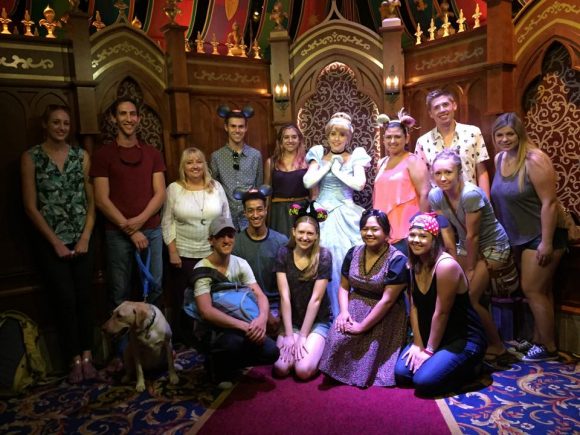 “The reason the class works is that the students are on the same page. It’s not like I have to teach a new religion or a new culture – they all know the content, because they all know Disney,” said course creator and instructor Julye Bidmead, Ph.D., associate professor of religious studies and director of fellowships and scholar programs at Chapman.
“The reason the class works is that the students are on the same page. It’s not like I have to teach a new religion or a new culture – they all know the content, because they all know Disney,” said course creator and instructor Julye Bidmead, Ph.D., associate professor of religious studies and director of fellowships and scholar programs at Chapman.
“The class is really not about Disney,” Bidmead added. “It’s actually an exploration of gender and gender studies, of race and religious tolerance and how these things are portrayed in the media. And the medium we use is Disney.”
Like Johnson, most students come to the class as Disney fanatics – “in a nice way,” Bidmead said. “I’ve had students tell me they came to Chapman in part because they heard we had a class on Disney.”
But that affection doesn’t keep the participants from casting a critical eye on Disney’s storytelling. Often their research focuses on specific characters and plot lines with attention to stereotypical portrayals of race, gender, sexual orientation and religion. The students use a wide range of academic research to drive class discussions and spark their own unique projects.
Along the way, the undergrads learn constructs of graduate-level research, and they also grow as writers and public speakers.
“In the five years of the class, we’ve had 10 students publish papers or give presentations in settings beyond Chapman,” Bidmead said.
While a student in the class, Marilyn Love ’15 did a project on Disney and Voodoo, and now the Ph.D. candidate is co-authoring a paper with Bidmead based on the research.
The most recent course also featured some interesting projects. For instance, three students researched “the traits of womanhood that Disney has set as our societal precedent.” They shared their results during Chapman’s Student Research Day.
“Over the years, Disney shows that women have to constantly change themselves physically or socially to fit in with standards that are set by men,” said Sharon Tang ’18, a biological sciences major and project participant.
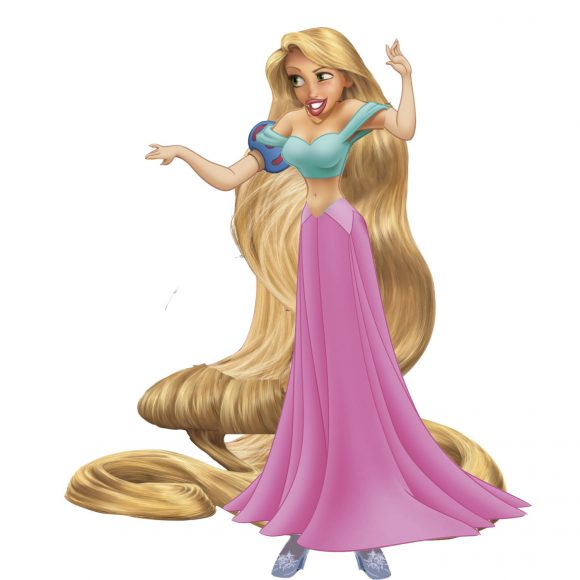
To illustrate, Tang, Dory Ann Carter ’19 and Taylor Killefer ’19 used Photoshop skills to create a single Disney character made up of the most memorable physical features from five different animated princesses. So what do you get when you combine Rapunzel’s hair with Snow White’s skin, Ariel’s mouth, Cinderella’s feet and Jasmine’s waist? The amalgamated character shows “that Disney princesses are crafted through the eyes and desires of men, and women are supposed to live up to these standards,” the students say in their conclusion.
“When you put all these traits together, you get a character with a body that’s completely contorted,” Tang said. “Not only do you realize it’s not achievable, but it doesn’t even look beautiful, as one would hope.”
In Johnson’s project, she investigated how the Pirates of the Caribbean ride and films portray racial diversity. She plundered a Captain Jack Sparrow line for her title: “Clearly You’ve Never Been to Singapore.”
“I’m fascinated by the worlds these films have brought to the screen,” said Johnson, a double major in theatre studies and film studies. “This quadrilogy goes to so many places around the world – Dominica, Spain, Africa – so I wanted to see how accurate they are compared to historical records. It seemed timely since there’s so much whitewashing going on in Hollywood.”
To extend the comparison, Johnson also included a study of the theme park ride, which first set sail at Disneyland in 1967. And lest ye think this was just an excuse for Johnson to indulge in her Disney worship, rest assured that indulgence gets buried like pirate treasure once you’ve ridden an attraction five times in succession.
“The ride moves so fast, it’s hard to count the figures and record their skin tone and their hair color as a measure of how their race and ethnicity are trying to be portrayed,” Johnson said.
She figured that over the 2 1/2 hours it took to make five trips through the line, she would benefit from shift changes and thus not have to explain her apparent obsession. But no, the same cast member helped her into the boat every time.
“Same girl, same quizzical expression: ‘Why are you riding this five straight times?’” Johnson said. “She didn’t say that, but she asked me with her eyes.”
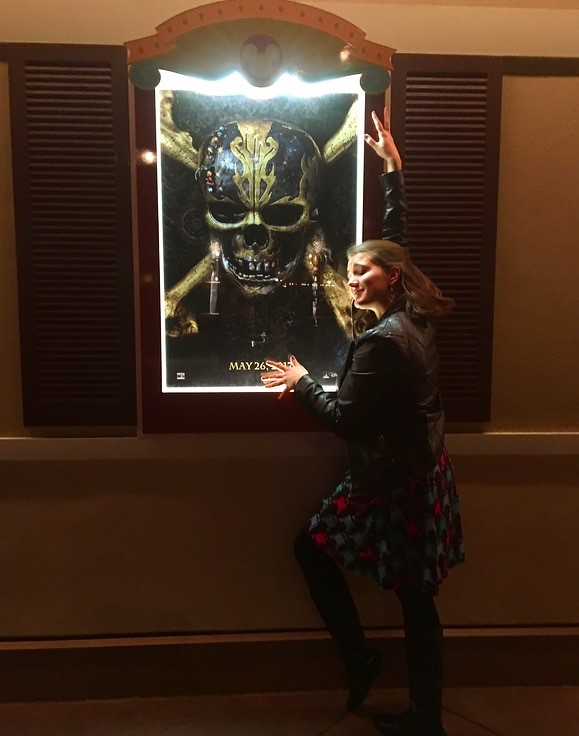
Johnson dived easily into the research on the portrayals in the Pirates big-screen series. Overall, she recorded 454 characters in the four films, but she limited her project to the 281 credited and confirmed actors, who together represented more than 30 nations.
On her research poster are two pie charts that break down the nationalities of actors in the film franchise as well as the physical representations of animatronic figures in the ride.
“Yes, the films are far more diverse than the ride,” she concludes. “So the film franchise is more representative of its international audience than the attraction is, and that’s a progressive step forward for the company.”
As for Johnson’s overall class experience, she called it “amazing,” adding that “nerd culture is coming into the norm, and this class inspired me to take it one step further and turn it into academia.”
Johnson’s project was so strong that Bidmead has recommended it for an international research competition in Ireland. And to think that at one point Johnson was worried about even taking Bidmead’s class.
“I thought I might face Disney haters, because they’re out there,” she said. “And I was concerned that I might end up hating Disney myself.”
Alas, Johnson’s fears were unfounded. It’s a researcher’s life for her.
“Everyone came to the class loving Disney, and we all left loving Disney,” she said.
“At the end of the day, the Walt Disney Co. is a business, and there will always be a disconnect between the art and the business. Trying to find the harmony in that is where my appreciation grows.”
Display photo at top: Students in the 2011 version of the class “Disney: Gender, Race and Religion” gather around Professor Julye Bidmead and her tiara on Main Street of the Magic Kingdom.
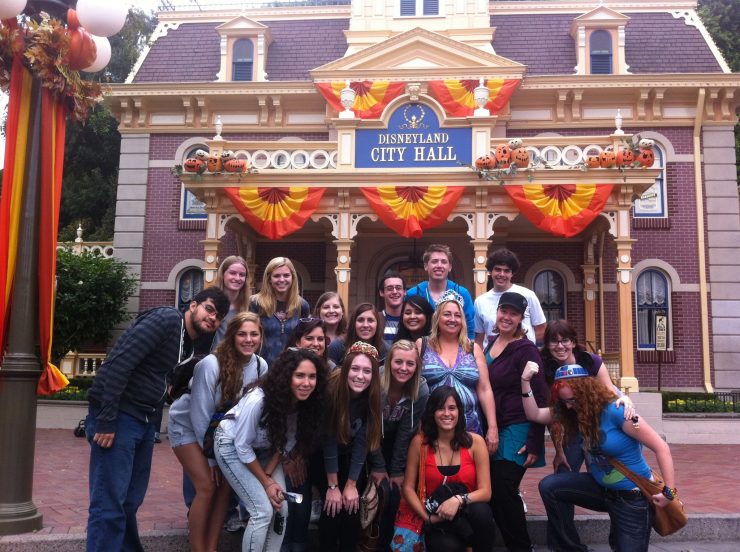
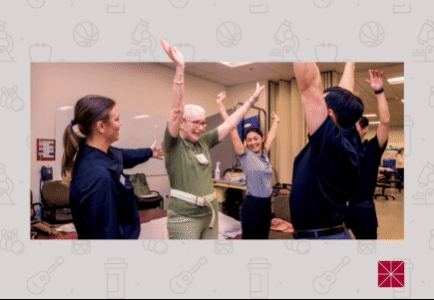
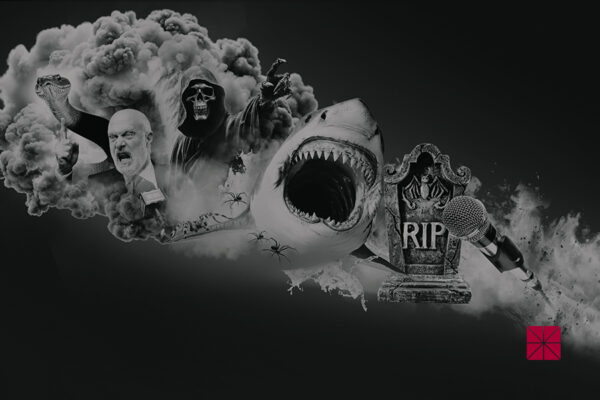


Add comment